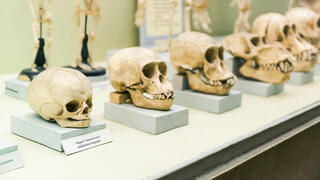Over the past two million years—a brief span in evolutionary terms—the human brain has tripled in size. This rapid growth likely played a key role in enabling us to develop complex cognitive abilities like language and advanced problem-solving. Many researchers have long sought to understand the basis of this phenomenon, often by comparing the DNA of modern humans, ancient humans, and chimpanzees.
In recent years, it has become increasingly clear that evolution is not driven solely by genetic sequences but also by epigenetics—the regulation of genes, which varies between species and even individuals, creating significant differences. To study epigenetic processes in the brain, researchers need brain tissue. However, no brain tissue from ancient humans, such as Neanderthals, has been preserved.
As a result, most research in this area has focused on bones, as they are the only tissues that withstand the ravages of time. 3 View gallery The study allows a glimpse into the brains of ancient humans for the first time ( Photo: Andrii Zastrozhnov / Shutterstock ) A groundbreaking study led by doctoral student Yoav Matov, under the guidance of Professors Liran Carmel and Eran Meshorer from the Department of Genetics and the Edmond and Lily Safra Center for Brain Sciences (ELSC) at Hebrew University , has for the first time allowed researchers to peer into the brains of ancient humans. The team developed an algorithm that can reconstruct DNA methylation patterns—a key epigeneti.


















